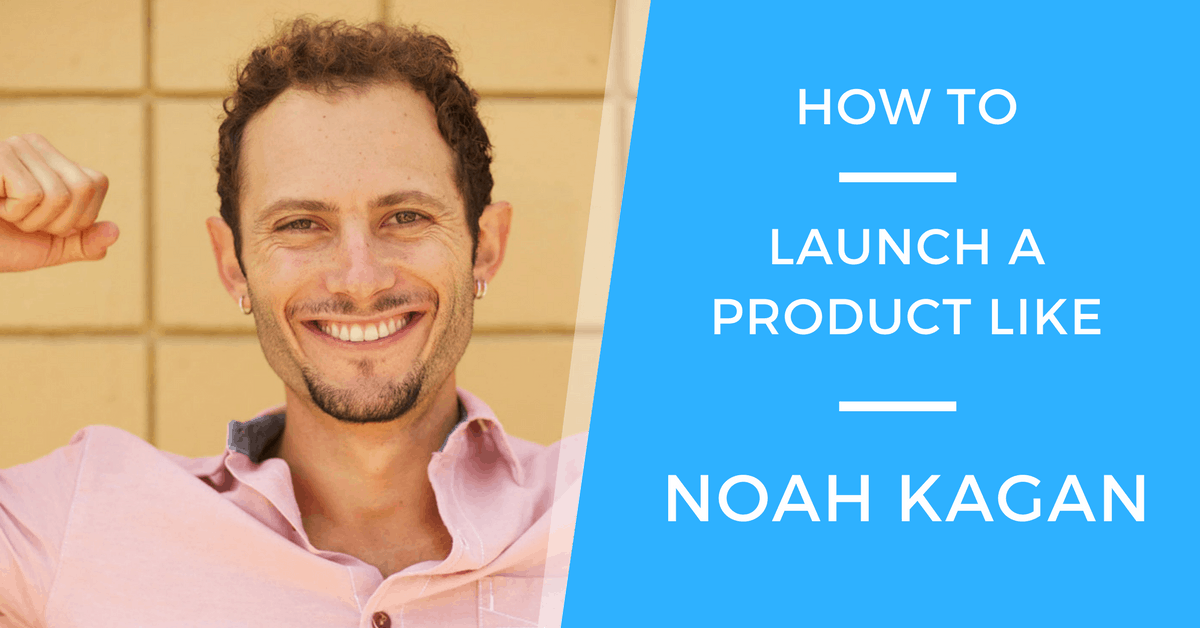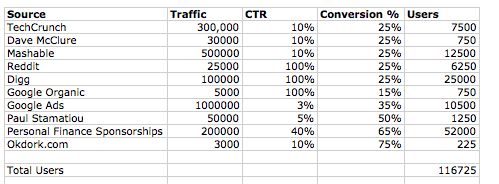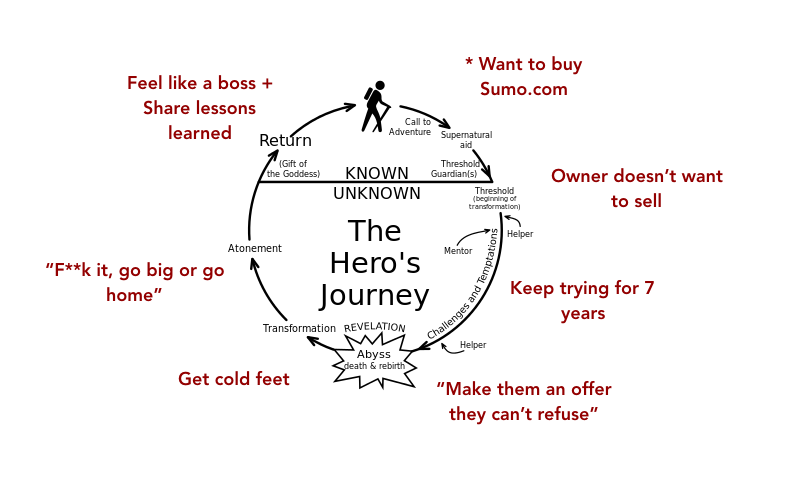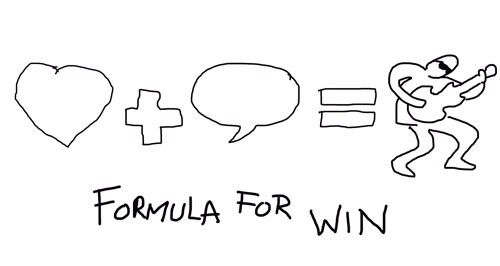Marketing 101: Learn from Noah Kagan of Sumo & Okdork

I’m a fan of Noah Kagan because he’s repeatedly proven that he has a solid marketing plan for launching businesses.
Noah got Mint off the ground, launched Gambit, and is now working on 7 and 8-figure companies Appsumo and Sumo.
Successful people like Noah operate in patterns. Look closely at his work and it’s like taking a Marketing 101 class.
You can see them and learn from what they’re doing.
So after poring over his work, dissecting interviews he’s given and reading nearly all the content he’s produced … I noticed something:
Noah uses the same marketing plan every time he launches something!
Whether it’s a new podcast, a feature launch, a new product, or announcing something like buying a domain name, he follows a 4-step marketing strategy. It’s almost like a template he follows.
And if we apply this plan to our work, we, like Noah, can increase our likelihood of achieving repeating success.
Let’s get started:
Step 1 — Validate. Is it worth doing?
Number one, have something people want. How do you know they want it? My simple rule is you have to be able to have 3 customers in 48 hours.
via Eventual Millionaire
Noah typically uses this marketing plan for helping people launch new businesses, but it can apply to anything you want to launch into the world.
The whole thing starts with getting real live market feedback.
How can you validate that this is worth doing in the first place? How do you know when to move on to another idea that has a higher chance of success?
For business ideas, Noah’s baseline criteria is “3 sales in 48 hours.”
If you’re not validating a new business idea, then come up with an equivalent of pre-sales.
How about:
- People signing up for an email list?
- Constantly losing deals due to missing features?
- Support tickets from customers threatening to leave?
You can really over-think validation. But you’ll be fine as long as you can make a strong connection on how it leads to people giving you money.
For Sumo Jerky, Noah validated his beef-jerky-as-a-service product by preselling it to office workers. He made $1,000 profit in 2 days.
When I was working in video games, we validated development of a feature by modeling how much net new revenue it would generate.
For this blog, I validated that people were interested in a marketing blog that studies the best marketers in the world. I personally asked for email addresses. I got 200 signups in 2 days.
Step 2 — Quantify. What is your goal and how do you get there?
I thought to myself as the nerves began to kick in. “How am I going to achieve that?”
via Okdork
When Noah started as the first marketing hire at Mint, he had a goal of getting 100,000 users in 6 months. For most people, that’s an intimidating goal — now consider that he was asked to do this in the mid 2000s.
To get there, Noah applied his Quant-based Marketing approach:
He took his end goal (100,000 users) then broke it down by making assumptions about where they would come from.

I’ve used this approach so many times in my career, and it’s helped me work through some hairy marketing problems. Thanks Noah!
This step is about de-mystifying ambiguous goals like “have a successful launch.” It’s about forcing yourself to precisely define what “success” actually looks like in numerical, quantitative terms that can be measured.
Based on what Noah preaches, and combined with my own experiences of using it over the last few years, here’s the keys to make Quant-based Marketing work.
First, choose ONE goal.
To make this system work, you have to pick one goal to work backwards from.
Everyone thinks they can get away with having multiple “priorities.” Even if your company has an unlimited marketing budget, you and your team do not have unlimited attention.
You and your team should all be looking at the same compass and agree on where “North” is.
Second, create a model showing how you’ll get to your goal.
[Here, you can use this template.]
Here’s a tip when running the “brainstorming” process: think of the conventional path, then think of the shortcut.
Third, look at how you’re doing — daily.
This is a living document. Stay close to your plan and adjust this regularly.
Expect to look at your plan daily. Noah still uses Quant-based Marketing at Sumo; he looks at it daily, then makes changes to it weekly.
We have a specific revenue goal for the end of the year. We’ve broken it down to a monthly basis.
On a daily basis, I check to see how we’re doing, and every week I re-jigger.
On Mondays, I’m looking at our numbers and how we’re trending towards our goal, and I either do more things, or maybe I’m turning down things that aren’t working as well.
via Tony Robbins podcast
Quant-based Marketing is based on assumptions and your best judgment at some point in time. But things change and assumptions get proven or disproven as you execute.
Here’s how I would think about it:

Step 3 — Hustle. How can you directly maximize your chance of success?
What would I do to close a sale if my life depended on it?
via Close.io
When I say “hustle”, I don’t mean its current warped definition of “constantly being busy and never sleeping.”
“Hustle” means to personally ensure that you are achieving your goals, and having no ego about how you do it.
As you start executing the tactics in your Quant-based Marketing plan, you’ll find that some of your assumptions were wrong. Some channels will over deliver; some channels will under-deliver; some will not work at all.
So maybe your feature launch flopped. Maybe your Facebook ads CPA is way too expensive. Maybe you got hit with a Google penalty at the worst possible time.
This is where most people give up!
Well, if you follow Noah’s playbook, you’re expecting this to happen. And you know that this is where you personally step in and MAKE the plan work.
At this stage, Noah is doing things like personally closing sales deals. He’ll engage with people asking questions on Twitter. He’ll do customer support to save accounts.
One of my favorite Noah hustle stories is the time he closed a deal for Gambit:
I wanted to meet Greg Tseng from Tagged, and I found out he was a runner.
And so, I mailed him a monthly running subscription so that every month, he gets a magazine from me.
I bought him running shoes just to have a meeting with him.
And that ended up making us few hundred thousand dollars of profit.
via Smart Passive Income
Personal involvement like this is a giant time drain and doesn’t scale, but that’s kind of the point. It’s like an airplane taking off — the engines work harder when it’s getting up to cruising altitude.
This is why you have to look at your Quant-based marketing plan on a daily basis.
You have to stay agile and make adjustments, and sometimes you have to come up with new tactics on the fly. Sometimes your company is going to be dependent on closing a sale and you have to stalk their CEO to figure out what kind of magazines they like.
Step 4 — Drive word-of-mouth. What can you do to get people talking?
So, what are you going to do [to take action on your business] today? Sumo started with 50 dollars. So, I have 50 dollars for all of you, this is my speaker fee.
Sign your name on it, put the date, and write the one thing you’re going to do with this money to make it a thousand.
via Fincon
The last step of the playbook is where Noah really shines.
Whenever he launches something, he knows how to get people to talk about it, allowing him to spread his message faster.
But he has an unfair advantage:
He’s been blogging for 10+ years, has connections to influencers and runs several million-dollar businesses.
So, obviously he’s going to have a larger following than most people reading this blog post.
But I think Noah’s secret sauce for getting word-of-mouth isn’t just because he’s famous. It’s because he does a few things super well.
And anyone can do these:
Tell stories
I don’t know if he does this deliberately, but almost every story he tells follows the Hero’s Journey narrative.

Our brains LOVE hearing stories told in this narrative. Pretty much every Hollywood blockbuster ever follows this narrative structure.
Noah gets people to talk about him because he tells stories in a way that people enjoy, and then enjoy re-telling to others.
The purchase of Sumo.com is a perfect example. Without the Hero’s Journey narrative, it would’ve just been another boring press release.
But the way that Noah tells the story, it’s interesting:

So the next press release, feature update email you write — think about how you can overlay your message onto this template.
Surprise people
How do you get word-of-mouth for your product?
In addition to your normal marketing playbook, do something people don’t expect.
On stage at Fincon, he gave away his speaker fees to the audience (everyone got about $50) to motivate them to start their entrepreneurial journey; and by the way, Noah has a course teaches you how to make money online.
Bribing? Yes. Memorable? Hell yes.
Have a personality
People enjoy helping Noah spread the word about his projects because they feel like they’re on his side.
They feel like they’re on his side because he’s openly for and against things. If you follow Noah, even a little, you know he’s always going on and on about how much he loves disc golf and tacos.
Noah intuitively knows that the first most important thing is your product, the second most important thing is personality for your product.

I mean, think about it. The entire article you just read was basically a giant ad for Sumo.
Marketing 101 — What we learned about marketing launch plans from noah kagan:
If you go and look at Noah’s work, you’ll see this 4 step strategy over and over. Here it is again:
Step 1 — Validate it (quickly and cheaply)
Step 2 — Quantify your goal
Step 3 — Hustle and build momentum
Step 4 — Get people to talk about it
Further reading
Want to learn more from Noah?
In addition to all the resources I’ve mentioned, check these out:
How I failed Seth Godin (and myself) – Appsumo
Trading Tipsy Growth Hacks with Noah Kagan – Authority Hacker
Noah Kagan: from FB employee #30 to growing Mint – This Week in Startups